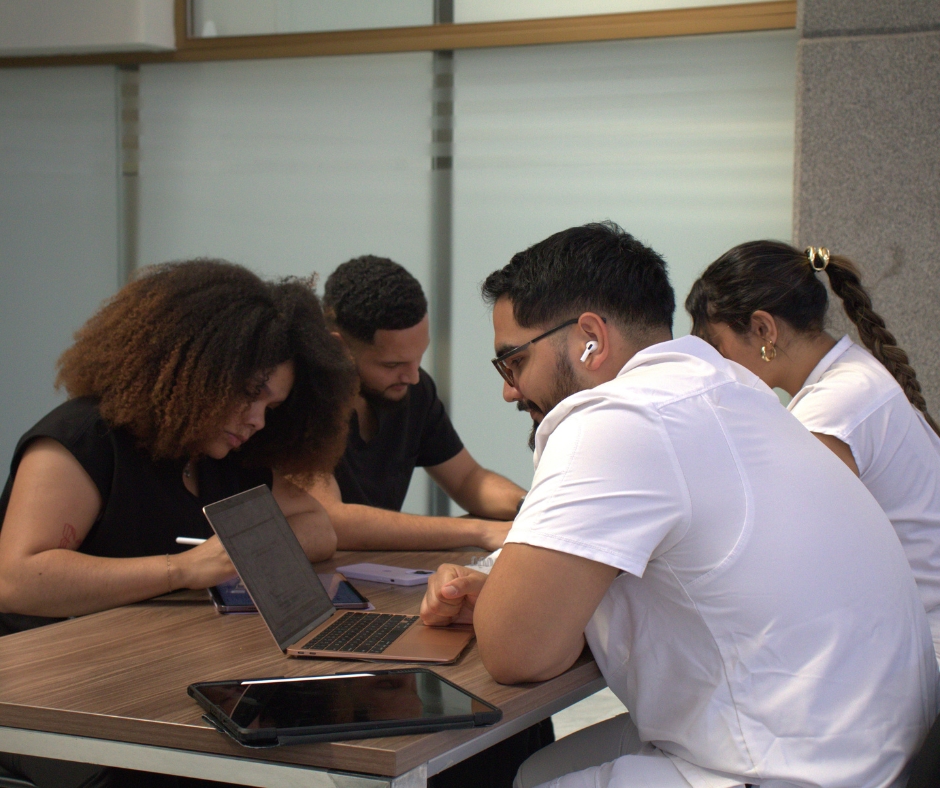


From the Office of Graduate Affairs and Career Advising (GACA)
Helping You Build a Strategic Pathway to Residency Success

By Roxane Grant
As medical students progress through their training, few decisions are as impactful as the timing and preparation for the USMLE Step exams. These critical benchmarks are not just requirements—they are influential signals to residency programs about your readiness for the next stage of clinical training.
At the Office of Graduate Affairs and Career Advising (GACA), we often hear questions such as:
When should I take Step 1?
How long should I study for Step 2 CK?
Does Step 2 really matter for my specialty?
These are important and valid questions. The truth is, the timing of both Step 1 and Step 2 CK matters significantly, not only for your exam performance but also for how residency programs will evaluate you. With Step 1 now reported as pass/fail, Step 2 CK has taken on even greater weight as an objective metric in the residency application process.
Here’s how to think strategically about your Step exam timing to set yourself up for a successful Match.
The transition of Step 1 to pass/fail was designed to reduce undue pressure on students, but it has also shifted attention to the value of clinical performance and Step 2 scores. However, don’t underestimate the importance of Step 1 preparation and performance—your mastery of this material lays the groundwork for everything that follows.
At many institutions, including ours, students are now taking Step 1 during the early portion of their core clinical rotations. This approach has distinct advantages:
Clinical context enhances learning. Seeing pathology firsthand in the hospital and clinic often reinforces the basic science concepts tested on Step 1. This can improve understanding and retention.
Application becomes reality. Concepts like acid-base balance or pharmacology are much easier to internalize when you’re watching a physician adjust a medication dose for a real patient.
Builds long-term retention. Integrating foundational knowledge with patient care deepens your comprehension, which will also help when studying for Step 2 CK.
However, this integrated timeline also means that time management is crucial. Balancing clinical duties with Step 1 preparation takes discipline and support. Use designated shelf prep time, institutional resources, and structured study blocks wisely. Talk with your academic advisors to ensure you’re not delaying progress by postponing the exam unnecessarily.
Ultimately, the goal for Step 1 is not perfection—it’s preparation. A pass ensures you can continue through clerkships and into the next phase of your training. But a deep understanding of Step 1 content will directly impact your performance on Step 2 and in clinical evaluations.
With Step 1 now pass/fail, Step 2 CK is the most heavily weighted standardized exam on your application. This is true for all specialties, from dermatology to family medicine. Regardless of your intended field, a strong Step 2 score demonstrates clinical reasoning, knowledge application, and test readiness—all essential qualities for residency.
It’s the new objective benchmark. With fewer numeric metrics available, Step 2 CK is now one of the few ways programs can assess applicants across schools.
It validates your clinical training. Step 2 CK draws heavily from the core clerkships. A high score shows you’ve learned deeply from your rotations and are ready for real-world clinical responsibility.
It can enhance your application. Even for less competitive specialties, a strong Step 2 score can help mitigate earlier academic challenges, less-than-stellar clerkship evaluations, or a pass on Step 1.

We strongly advise taking Step 2 CK shortly after completing your core clinical rotations, when the content is still fresh and you’ve built clinical reasoning skills across disciplines. Don’t let too much time lapse before dedicating time to study.
Ideally, you should plan to complete Step 2 CK early enough to have your score available by the time you apply through ERAS, typically in late summer or early fall. A good rule of thumb is to sit for Step 2 CK no later than mid-July, though some students may choose to take it earlier depending on their rotation schedules and specialty goals.

While every student’s needs vary, most find that 4 to 6 dedicated weeks of study after core rotations—combined with shelf prep throughout the year—provides a solid base for success. Use that time to review AMBOSS, NBME practice exams, and other core reference texts, and treat your study period with the same seriousness you gave to Step 1.
Map your timeline. Work backward from your ERAS submission deadline to plan your Step 2 CK date.
Balance rotation schedules. If possible, avoid high-intensity electives immediately before your Step 2 study period.
Seek advising support. The GACA team is here to help you create a personalized timeline that aligns with your academic progress and career goals.
Be honest about your readiness. Don’t rush either exam—especially Step 2 CK—just to meet a deadline. Your performance will speak louder than your test date.
Your Step exams are more than academic hurdles—they are opportunities to prove your clinical readiness and shape your trajectory toward the residency of your choice. By taking Step 1 with a solid plan during the early clerkship phase and preparing diligently for Step 2 CK soon after core rotations, you are investing in both your present learning and your future career.
A high Step 2 CK score is an asset—no matter your specialty. It signals to programs that you are prepared, capable, and serious about medicine.
At GACA, we’re committed to helping you approach each stage of this process with strategy, support, and confidence. Don’t hesitate to reach out as you map out your journey to residency. Together, we’ll ensure your next steps lead to success.